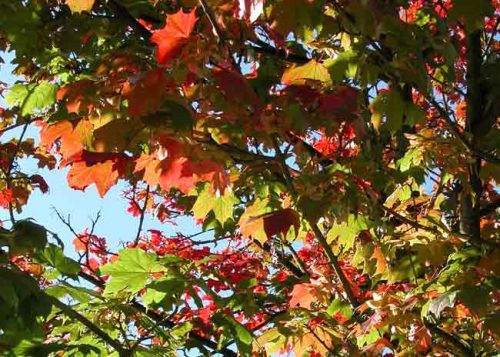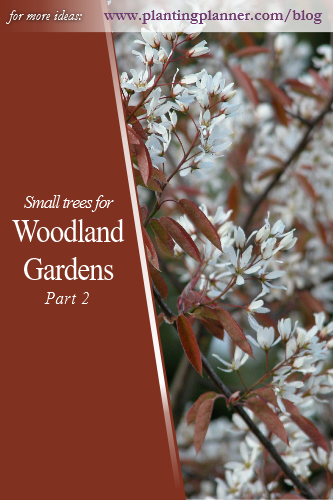12 Stunning Woodland Trees
from The Weatherstaff PlantingPlanner – intelligent garden design software
Woodland gardens invoke all our senses at once. Sun dappling through leaves, a shady respite on a hot summer’s day, birdsong, damp earth, rustling leaves.
12 Stunning Trees for a Woodland Garden
The key to planting up a woodland garden is to get the layers right – trees, shrubs, perennials, bulbs. Unless you have acres to play with, choose trees which won’t grow too tall or spread too wide for your garden.
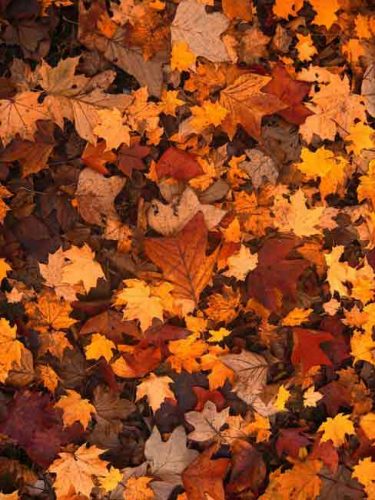
Deciduous trees are a good choice because they allow for a wonderful display of spring bulbs and early perennials before the canopy leafs up. You will also have a ready supply of fallen leaves in autumn to make leaf mould. Gather up the leaves into bin bags, pierce the bags to ventilate them and leave them to compost. A year later, you should have a good supply of leaf mould, for mulching your garden borders.
Plant 3 or 4 trees closely together and underplant with shade-loving shrubs, perennials and bulbs. In a small garden, you can achieve the same effect on a smaller scale by planting just one multi-stemmed tree. Create your own multi-stemmed tree by pruning the trunk back to just above ground level. This forces new shoots to break from the stump.
Your woodland garden should provide some respite from the hot summer sun, not constant deep dark shade. The plan is to create a canopy of leaves which will allow some sunlight through to dapple the understorey planning below. Be ready to prune congested branches if they are blocking out too much light. A useful technique is to remove lower branches of the trees – lifting the crowns will allow more sunlight through.
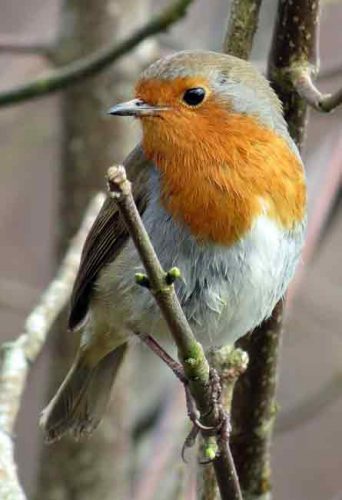
All trees are great for encouraging wildlife into the garden. They will provide nesting sites for birds, shelter for small animals and attract bats and pollinating insects. The silver birch is recorded as supporting up to 229 different insect species and its seeds are loved by greenfinches, goldfinches, siskins and redpolls.
Here’s a selection of stunning trees suitable for a woodland garden.
Silver birch
Silver birches are perfect for small woodland gardens.
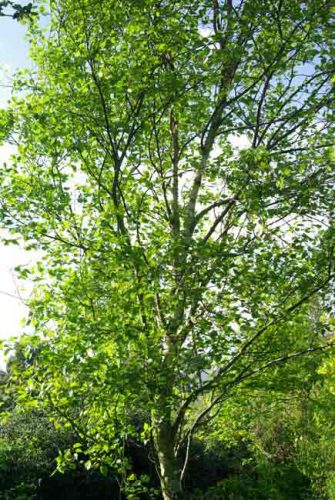
Betula pendula ‘Fastigiata’ is a narrowly columnar, deciduous tree, with upright branches. The white, peeling bark eventually becomes dark and more rugged at the base with age. Diamond-shaped leaves, sharply toothed, are mid-green, turning yellow in autumn. Yellowish-brown catkins appear in spring. It prefers moist, well-drained soil in sun or light shade. It grows to 10m in height.
Betula pendula ‘Fastigiata Joes’ has an even narrower shape and whiter bark than Betula pendula ‘Fastigiata’. It was shortlisted for Plant of the Year at Chelsea 2017. Eventual height and spread 5m x 2m.
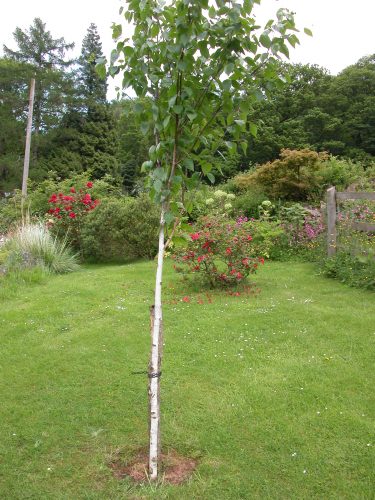
Betula utilis var. jacquemontii is slender, with an elegant, open habit. It grows to 18m in height. The oval, dark green leaves take on golden yellow autumn hues and its white, peeling bark is a particularly attractive feature, especially in winter. The white bark develops fully by the time the tree is 8 years old.
Betula utilis var. jacquemontii ‘Grayswood Ghost’ has the RHS Award of Garden Merit. It is one of the best white-barked birches, with a smooth, pure white trunk.
Crab Apples
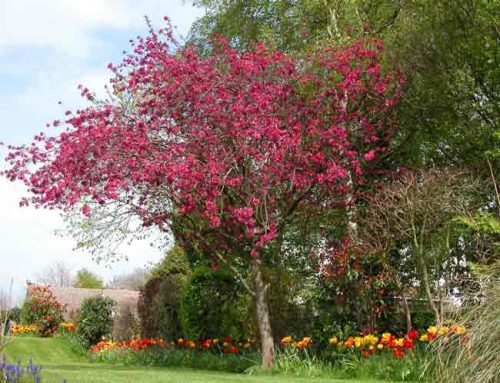
Crab apples are tough, very hardy plants and can tolerate most soils and conditions, apart from extremes of water-logging or drought. As a bonus, the apples can be harvested in autumn and cooked to make jellies and jams.
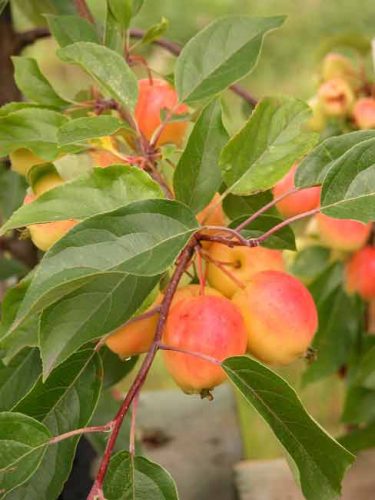
Malus ‘John Downie’ is an attractive small tree with bright green, deciduous foliage and several seasons of interest in the garden. Pale pink buds open to a profusion of 5-petalled, white flowers in late spring. Slightly elongated red fruits, flushed orange and yellow appear in autumn.
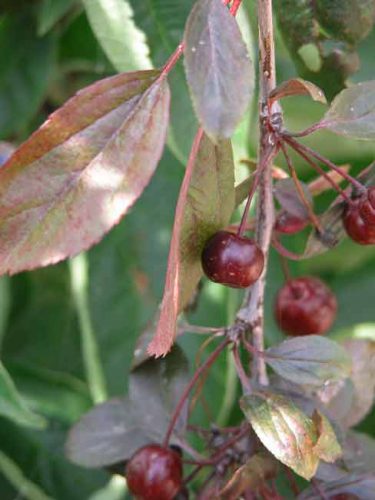
Malus ‘Royal Beauty’ is a small, weeping tree. The deciduous foliage is red-purple when young, becoming dark green with purple undersides later. Flowers are deep red-purple with small, dark red fruits appearing in autumn. Both John Downey and Royal Beauty have gained the RHS AGM.
Ornamental cherries
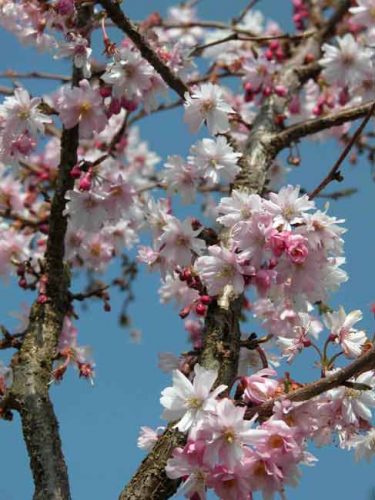
Prunus × subhirtella ‘Autumnalis Rosea’ is a delightful, flowering cherry, which blooms intermittently through the winter months. This small, deciduous tree has an elegant spreading habit and orange and red autumn hues. Delicate, semi-double, pink flowers appear in mild spells between autumn and spring. It grows to about 8m.
Cornus controversa ‘Variegata’
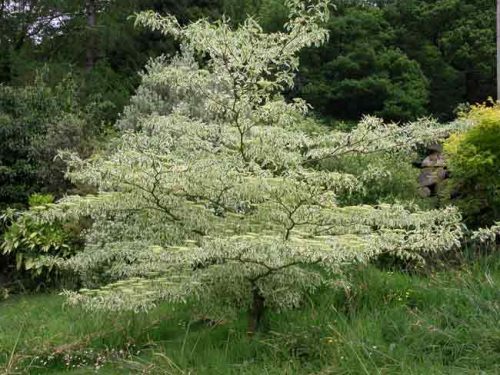
The wedding cake tree has distinctive spreading, tiered branches and grows to 8m. Its leaves are dark green, with cream-white margins, becoming yellow in autumn. Large, flat heads of small, creamy-white, star-shaped flowers are carried in early summer, followed by blue-black berries.
Amelanchier
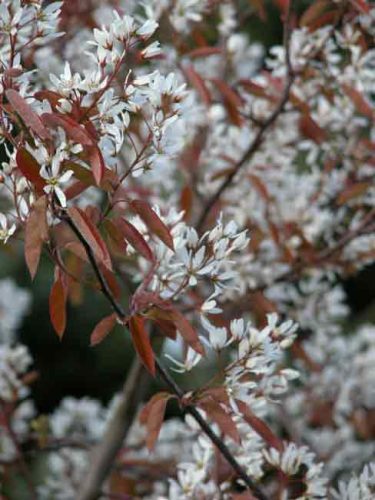
Amelanchier canadensis is an upright shrub or small tree growing to 6m. It really pulls its weight in a small garden as it blossoms profusely in spring and has stunning autumn foliage. The starry spring flowers are followed by blue-black berries in early summer, which can be used in jams and pies.
Corylus
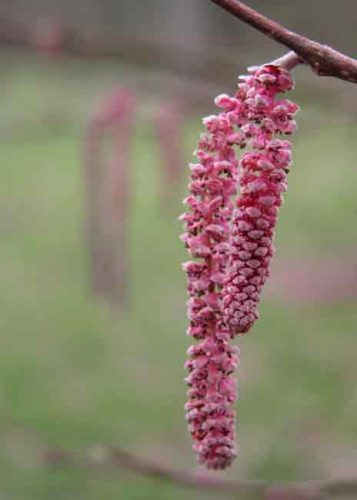
Corylus avellana is a large, bushy, deciduous shrub or small tree (5m tall), producing edible nuts. It has yellow autumn leaves and showy yellow catkins in late winter and early spring. The edible hazelnuts ripen by autumn.
Corylus maxima ‘Purpurea’ has heart-shaped, deep purple leaves and purple-red catkins.
Magnolia stellata
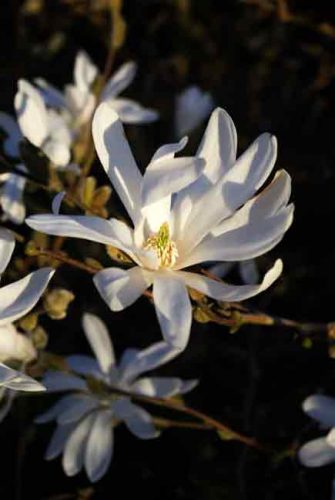
If you want something compact for a small area, Magnolia stellata might fit the bill. It is a 3m high deciduous shrub, with a beautiful display of delicately-scented spring flowers, opening from soft, downy buds. The mid-green foliage appears after the flowers.
In a small garden, every plant must earn its place. The best choice for a small woodland garden are trees which have more than one season of interest – spring blossom, summer foliage, fruit, autumn colours, winter structure. If you are lucky, you may be able to ‘borrow’ trees from over the garden fence – a neighbour’s tree might provide all the shade you need for the top layer of planting in your woodland garden.
Pin for later
For more gardening ideas, click here to follow the Weatherstaff PlantingPlanner on Pinterest.


